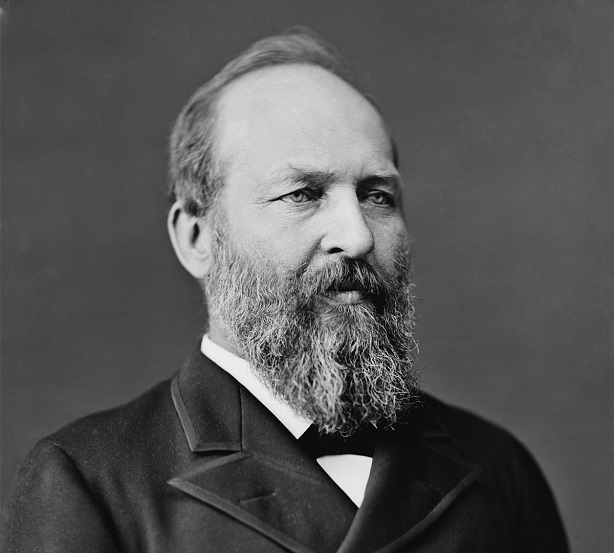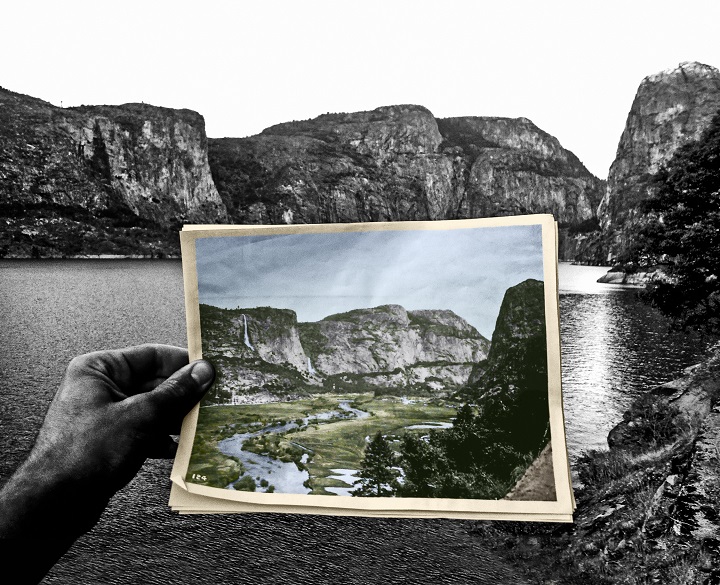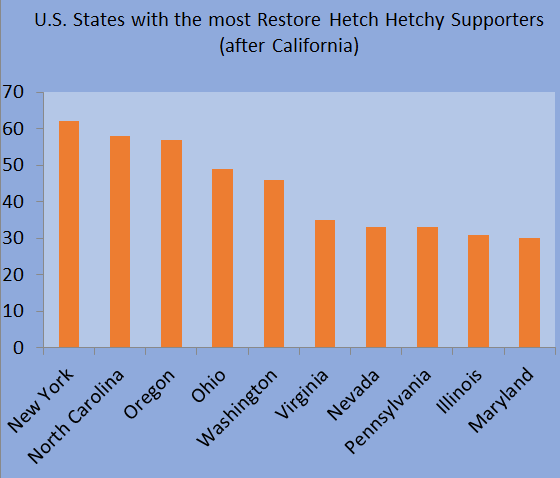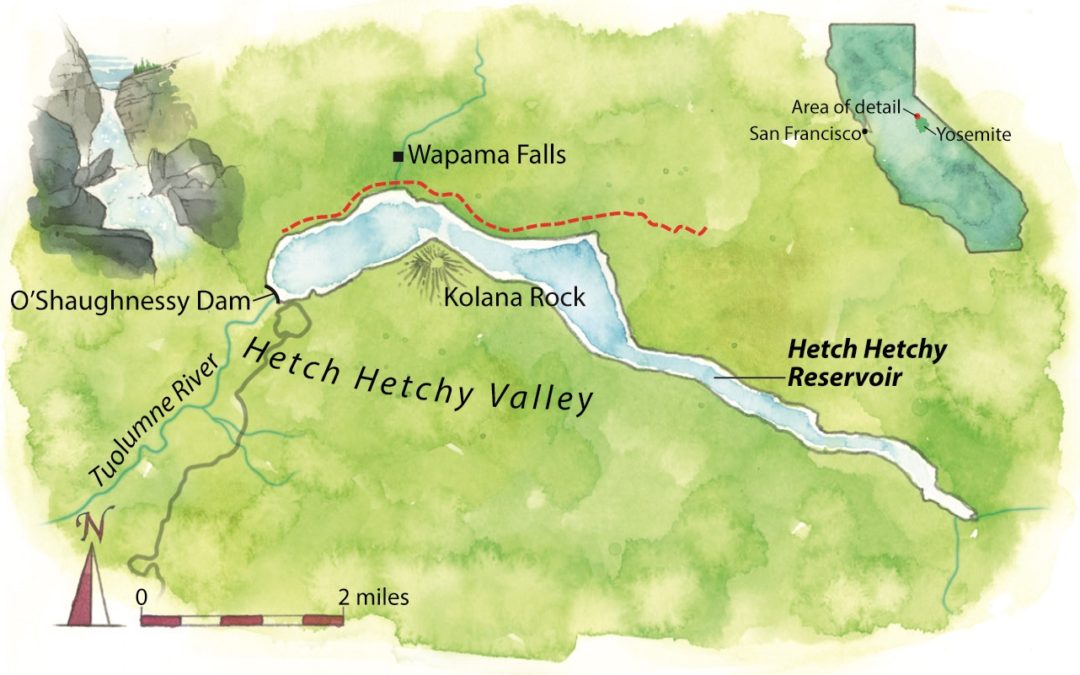
by danielcmckenzie | Aug 8, 2020 | Uncategorized
James A. Garfield of Ohio was elected to Congress in 1862. In his first term he voted on the unprecedented 1864 Yosemite Grant, later signed by President Lincoln, to cede Yosemite Valley and the Mariposa Grove to California “upon the express conditions that the premises shall be held for public use, resort and recreation.”
In 1871, with the Republican Party in control of both houses of Congress as well as the Presidency, Garfield was named head of the Appropriations Committee. (For those who may not know, the Appropriations Committee controls where the money goes.) James Garfield was one of the most powerful men in Washington.
That all changed during the midterm elections of 1874. In the biggest ever “flip” of the House, the Republicans lost 96 of their 203 seats. Garfield suddenly went from being one of the most powerful men in Washington to being just one of 293 Congressmen.
So what did James Garfield do? He went to Yosemite!
Garfield hopped aboard the transcontinental railroad, completed only six years earlier, and traveled to California. He then took another train to Merced, a stagecoach to Mariposa and finally traveled by horseback to what is now Yosemite National Park.
James A. Garfield was impressed by what he saw, but felt he was unable to put it all in words:
“(Yosemite) is one of the few things I have ever examined which has not been over praised. All description fails adequately to exhibit its greatness.”
Upon visiting the Mariposa Grove, Garfield wrote:
“To look upon a tree that antedates the Christian Era; that was in lusty vigor when Rome was founded; that is older than the Iliad, is a thing not to be passed over lightly. I came down from the mountain feeling as thought I had communed with the monarchs of the classic days.”
Garfield’s view of Yosemite Valley came as a snow flurry subsided. He wrote:
“After a sharp shower of ten minutes the sun burst forth in full splendor disclosing the wonderful beauty of Bridal Veil Fall and the grand doorway to the Yosemite formed by the El Capitan on the left and the Cathedral Rocks on the right.”
In a letter to his family Garfield wrote:
“Tell Mamma that in my late letters I have spelled it as two words, but I was wrong. It is only one word, Yosemite, and is pronounced Yo-sem-i-te, four syllables, accented on the second.
James A. Garfield traveled to Yosemite in 1875, five years before he was elected president of the United States. Many Presidents have visited Yosemite while in office, including Rutherford Hayes, Theodore Roosevelt, William Taft, Franklin Roosevelt, John Kennedy and Barack Obama.
No Presidents have visited Yosemite’s Hetch Hetchy Valley, but several Secretaries of the Interior have, including Richard Ballinger (Taft), Donald Hodel (Reagan) and Ryan Zinke (Reagan). Secretaries James R. Garfield (Roosevelt, and son of President James A. Garfield) and Franklin Lane (Wilson, and former City Attorney for San Francisco), both of whom played key roles in damming Hetch Hetchy, never visited Hetch Hetchy.
Yosemite, including Hetch Hetchy, is rich in American History. Restore Hetch Hetchy is committed to writing the next chapter.
Much of the information above was derived from material posted on the internet by Ephriam Dickson, who researched Garfield’s trip via the Library of Congress. Our thanks to Mr. Dickson.
See more posts

by danielcmckenzie | Jul 30, 2020 | Uncategorized
We’re excited that restoring Hetch Hetchy will be featured on mainstream television in the Bay Area this Sunday (and rebroadcast August 23). It will be the concluding segment on OpenRoad with Doug McConnell – in an episode dedicated to the restoration of Sierra meadows. For those not in the Bay Area or who want to see it on their own schedule, the show will stream online as well.
Host Doug McConnell travels to a series of Sierra meadows where restoration is underway and talks to the people on the ground who are making it happen. Each place is a wonderful success story, with beautiful and inspiring scenery.
Obi Kaufmann, painter, poet and author of the California Field Atlas and other books, waxes poetically about Hetch Hetchy.
“It’s there for the taking.” he explains.
OpenRoad concludes the episode with its segment on Hetch Hetchy. McConnell is clear that he is not taking sides in the “debate”. The opportunity comes across, however, as exciting and compelling, as it well should.
How exciting it will be when we are at the stage of these other projects – when San Francisco’s reservoir is relocated, outside of Yosemite, and the actual work restoring Hetch Hetchy Valley can begin.
Check out the show – on TV or online, and let us know what you think.

by danielcmckenzie | Jun 21, 2020 | Uncategorized
Last week, an impressive septet from the UC Davis Center for Watershed Sciences published a thoughtful blog titled “What’s the dam problem with deadbeat dams?”.
The authors note that the environmental, political and social dynamics we have employed in building dams over the past 170 years have changed, sometimes radically. They recommend establishing a blue ribbon panel and analytics that would “transparently and objectively analyze natural resource management decisions in a careful and organized way”.
Restore Hetch Hetchy agrees. Like the UC Davis team, we are not anti-dam, and we also understand that “dams underpin much of California’s public safety and economy.”
But we also agree that it’s time to revisit the decisions to build some dams, whether for public safety, economic or environmental concerns. In our view, the O’Shaughnessy Dam cries out for reassessment due to the unmatched opportunity of returning Hetch Hetchy Valley in Yosemite National Park to its original splendor.
Some of our supporters have also expressed this sentiment – that we should not need to live with mistakes of the past – in similar terms, including:
It would tell the rest of the world we are not imprisoned by a decision we made 100 years ago. – Tom Philp, Pulitzer Prize winning journalist
We will need both intellectual humility and political courage to say, for example, that we made a mistake when we dammed Hetch Hetchy or Glen Canyon; let us take down with humility what we once built with pride. —Terry Tempest Williams, American writer, educator, conservationist, and activist
To simply say, oh, the old dam is there, so forget it, is like saying, oh, the air already is polluted or pesticides already are in our food chain or that our nation’s infrastructure already is crumbling, so why try to do better? We can, and we should.” — Bob Binnewies, former Superintendent, Yosemite National Park
Emotionally, many of us would simply love to tear down the O’Shaughnessy Dam. But we understand it does provide water supply and hydropower benefits that must be redressed before restoration begins.
Its past time to undertake the analysis proposed by the UC Davis team at Hetch Hetchy, and to compare the short term costs of improving San Francisco’s water system with the extraordinary benefits that restoration would bring in the years, decades and centuries to come.

by danielcmckenzie | Mar 10, 2020 | Uncategorized
Of course, many San Franciscans, old-timers and new arrivals alike, do support restoration, as do residents of San Mateo and Santa Clara Counties who purchase water from San Francisco. While we cherish all our supporters, it is especially gratifying when we get new ones who “drink the water”.
In all we presently count 5,112 supporters, spread throughout California and across the United States, with a handful in various other countries. (This count of supporters are folks who have contributed financially – there are many others who support us on social media and/or receive our email updates. We don’t know where most of these folks live, but we are grateful to them as well.)
Not surprisingly, most support comes from California where 4332 supporters are scattered in 54 of 58 counties (Alpine, Glenn, Modoc and Sierra are missing). The top ten counties are shown below.

Nationwide, Restore Hetch Hetchy has supporters in 47 states – Delaware, Kansas and North Dakota are missing. The top 10, after California, are shown below.

As always, we ask our supporters to help spread the word. It would be great to bring in representatives of Alpine, Glenn, Modoc and Sierra Counties and of Delaware, Kansas and North Dakota.
Most importantly, we need to reach out to people in San Francisco. We do need to work with the multi-generational, Hetch Hetchy-in-their-DNA crowd whenever possible. And it is essential that we bring in young people, whether they are native San Franciscans or more recent arrivals, who have a strong environmental ethos and wish to make Yosemite National Park whole again.

by danielcmckenzie | Feb 9, 2020 | Uncategorized
CalMatters has posted our op ed “Once again, San Francisco officials are limiting public access to the majestic Hetch Hetchy Valley”. CalMatters is digital-only, but widely-read and well-respected. Governor Newsom posted his water commentary there last week as well.
Please read the Op Ed at Cal Matters. It speaks for itself, but a few points warrant emphasis:
- Restore Hetch Hetchy is confident that improved access at Hetch Hetchy, whether by eco-friendly boat or other means, will help build support for emptying the reservoir and restoring the valley.
- Until the reservoir is emptied and the valley restored, a quiet, electric, park service-operated tour boat, or rental canoe or kayak, would be a wonderful way to visit the area – even for people who do not normally boat on reservoirs.
- The shenanigans* that took place in December may be all too common and seem minor compared to other issues before Congress. The effort is, however, nonetheless egregious. Without any public review or discussion, the action directly undermines the Raker Act which, whether we like its outcome or not, was substantially debated in 1913.
- As our Op Ed points out, the boating ban comes in a side report to the must-pass bill, not in the bill itself, so its legal standing is ambiguous. We don’t read it as binding. Stay tuned …







